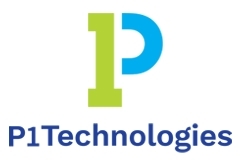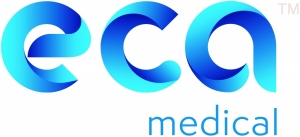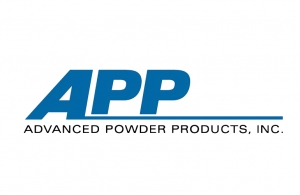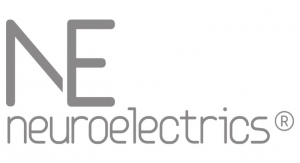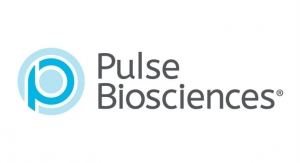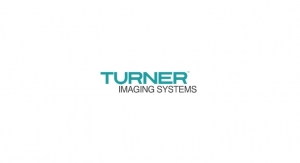Brad Womble, Senior Director of Strategy, Marketing, and Mergers & Acquisitions, Jabil Healthcare11.04.20
Claudius Galen was born in 130 A.D. in the city of Pergamon, located in modern-day Turkey. A Greek doctor in the Roman Empire, he studied medicine in Alexandria, site of one of the oldest empirical educational institutions in the history of medicine.
A firm disciple of Hippocrates, Galen contributed substantially in shaping the profile of modern observational medicine. He also had a remarkably modern concept of what we’ve come to describe as wellness—i.e., how to preserve one’s health through diet, exercise, and lifestyle choices.
The oft-quoted “It’s far more important to know what person the disease has than what disease the person has”—is attributed to Hippocrates, but lived on with Galen, particularly as evidenced in his pioneering diagnostic use of the pulse rate. The pulse continues to be the most fundamental sign of life. If somebody collapses on the street, checking the pulse is a responder’s first order of business, regardless of whether they’re a trained medic or just a passerby.
Today, the measurement, documentation, and analysis of arterial pulse and many other vital biomarkers is done via a wide range of digital health technologies, embedded in scanners, wearables, and even clothing. Medical devices that facilitate examination, diagnosis, treatment, and prognosis have been transformed by connectivity technologies, reinvigorating within healthcare a more patient-centric concept of medicine.
What’s old is new again? All individuals have a unique reaction to disease, just as each disease reacts differently within distinct patient populations, dependent on numerous variable factors, including environment, genetic makeup, as well as social determinants. The roots for these perspectives on human physiology go back millennia, even if the terms “Precision Medicine” or “Personalized Medicine” are relative newcomers.
The tremendous opportunity here in the 21st century is the degree to which distance between what’s observed (the diagnosis) and what can be done about it (the treatment) is being mediated by a more proactive and actionable practice with the patient at the center of point-of-care.
Internet of Medical Things
Internet of Medical Things, or IoMT, technologies have emerged as the key enabler of a much more holistic and complete disease-state management toolbox, essential to enabling precision medicine’s potential for delivering the “right treatment at the right time,” while simultaneously helping push care from higher cost settings to lower cost ones.
Digital capabilities are now built into a wide range of healthcare devices, from diagnostics and medical imaging machines to surgical instruments and orthopedics. All these connected devices generate a continuous stream of health data purposed for patient support, predicting, or preventing poor outcomes and otherwise curating perspective for greater therapy insights and improved health.
In a recent Jabil-sponsored survey1 of more than 400 healthcare decision-makers, three-quarters indicated their company is either seriously considering options for personalized solutions or are already producing these solutions.
Wellness-supporting ecosystems—coalescing as digital health platforms—are driving better options for treatment and more cost-effective clinical outcomes. They are also making it possible for patients to maintain the most productive, informed, and personal connections with their providers.
Telehealth Traction During COVID-19
Digital technology’s capability to keep us connected, despite physical distance, has been one of the dominant themes in the world’s response to the COVID-19 pandemic. Sensors, trackers, remote patient monitoring (RPM) technologies, and other elements of digital healthcare make the point-of-care the patients themselves, and as such, simultaneously close the distance between patient and healthcare provider while also opening up opportunities for how, when, and where these interactions take place. They’re enormously cost preserving too.
Treating patients at home using IoMT devices helps reduce the burden on hospital capacity. At the height of COVID-19’s initial case surge in Spring 2020, there was no more urgent need in healthcare than preserving the limited resources of hospital beds and doctors’ time for those who truly needed them most.
Within the broader category of telehealth, telemedicine refers to the practice of connecting patients to clinical healthcare services through a combination of interactive video and remote monitoring. Prior to the COVID-19 outbreak, only 28 percent of doctors reported using telemedicine in 2019, which was about double the figure for 2016 (according to a study of physician’s motivations and requirements for the adoption of digital clinical tools conducted by the American Medical Association).2
Certainly, impressive growth in just a few years’ time, yet as would be expected, the pandemic has driven acceleration in adoption to a whole new level. It’s also resulted in a measurable change in patient attitudes. Business Insider reports that as of December 2019, only 8 percent of U.S. adults had tried telemedicine; by March 2020 that number had jumped twofold to 17 percent.3 Not incidentally, it was in March that Medicare expanded coverage of telehealth benefits, while insurers including Aetna, Anthem, Blue Cross Blue Shield, Cigna, and UnitedHealthcare have since also initiated telehealth-positive positions by either providing temporary coverage or waiving telemedicine costs.
Digital Health Crosses the Divide
In March of 2020, just as the crisis was accelerating, Seema Verna, CMS (Centers for Medicare and Medicaid Services) administrator, stated with assuredness—“I think it’s fair to say the advent of telehealth has been just completely accelerated, that it’s taken this crisis to push us to a new frontier, but there’s absolutely no going back.”4
Digital health products and technologies have provided a bridge during a time of flood. Direct access to our physicians and medical centers is changing. We are being triaged and treated differently and if something can be done remotely, or through a sensor with digital connectivity, it’s getting embraced to deliver us safely and with more cost efficiency across the COVID gauntlet.
But even apart from the pandemic, healthcare has witnessed a massive shift toward more aggressive leverage of digital technologies in healthcare. A study undertaken by the McKinsey Center for US Health System Reform released in 2019, prior to the emergence of the SARS-CoV-2 coronavirus, predicted that RPM devices, robotics, and other medical technology advancements will create between $350 billion and $410 billion in annual value by 2025 (out of the $5.34 trillion in healthcare spending projected for that year).5 The convenience and cost- and care-effectiveness demonstrated by digital health during the challenges of 2020 will only fuel this enthusiasm.
Tackling the High Costs of Chronic Conditions
At the core of the healthcare industry’s digital transformation is the power and privilege of personal health data: privilege, due to the trust implicitly granted in keeping it private and secure; power, due to extractable intelligence for advancing disease diagnostics and treatment.
Digital healthcare’s data-capturing medical devices are instrumental for delivering on the imperatives of value-based care (VBC). More data is available from a wider variety of sources (imaging, genomics, vital signs, lab tests collected over time, etc.). While an extraordinary physician like Galen or Hippocrates might have had exceptional abilities in understanding and drawing conclusions from patient information gathered from a limited collection of data sources over a short period of time, the scale of today’s healthcare data (growing by a zettabyte—a trillion gigabytes—every year) requires superhuman powers to harness.
Artificial intelligence (AI) and machine learning (ML) are the power analysis tools for our time and their existence within healthcare continues to drive extraordinary discovery. Self-improvement is baked into the analytic muscle of AI and ML too—their modeling is flexible, capable of being continually “re-trained” to incorporate any potentially discovered insights or needs and adapting to them.
These analytics technologies are not replacements for knowledge but the means for drawing conclusions from information gathered across a broad collection of diverse sources over clinically relevant periods of time. They are tools for better decision making; delivering the kinds of actionable insights that enable “personalized medicine” and deliver on the goals of VBC.
Digital Twins Drive Performance
Digital healthcare platforms which embody continual, “always on” wellness guidance have emerged as a dominant model in health management. AI and ML are a digital platform’s engine for powering feedback loops as constructed through digital twin methodologies.
According to Dr. Mohamed Rehman, a professor and clinician at Johns Hopkins All Children’s Hospital, a digital twin in healthcare is essentially a “backup” of a patient’s physical state captured before a procedure, so providers know what to look for as the patient works toward recovery.6 More and more, researchers are taking advantage of wearables and other IoMT devices for the creation of a patient’s health baseline, where deviations from the norm can detect and alert issues of concern earlier and more proactively.
These systems can make predictions about the patient’s health, behavior, adherence to medications and therapy; provide feedback about the patient’s progress; offer recommendations including alternative regimens of diet and exercise; and provide informed actionable insights that will better guide the patient’s management of their disease and recovery.
The concepts which underpin digital twin utilization at the patient level are equally as leverageable at other layers within the ecosystem. Yes, digital twin insights help make patients better, but they also make medical devices better. And they make the manufacturing of the device better, too.
What error codes are being generated? What’s the service history? What about the performance of the plastics from specific injection molding machines? Post- market surveillance monitoring for safety and effectiveness in the field is now a requirement of the FDA and will also be mandated in the European Union in 2021.
Digital twin for a device and within manufacturing processes helps optimize performance throughout the value chain. It’s like having a genetic profile plus comprehensive electronic health records, but for a device and all its components. If the device fails, it can be traced; analyzing the performance and acting on these insights will help limit loss due to failure or non-productivity. More importantly, dramatically reduced failure rates will save lives and improve care.
Medical science is complex, intricate, and nuanced. The challenge for OEMs is how to make it easier for consumers to be healthier and for healthcare providers to deliver better care. The opportunity for manufacturing partners is to leverage what we’ve learned about the patient and apply it back to the device. It’s becoming increasingly clear that data-driven platforms and connectivity technologies have made tremendous strides delivering on this once future vision. In the meantime, check your phone…Dr. Galen has some insights he’d like to share—he’s read your file and is up to date. There’s an App for that, and you’re in good hands.
References
A firm disciple of Hippocrates, Galen contributed substantially in shaping the profile of modern observational medicine. He also had a remarkably modern concept of what we’ve come to describe as wellness—i.e., how to preserve one’s health through diet, exercise, and lifestyle choices.
The oft-quoted “It’s far more important to know what person the disease has than what disease the person has”—is attributed to Hippocrates, but lived on with Galen, particularly as evidenced in his pioneering diagnostic use of the pulse rate. The pulse continues to be the most fundamental sign of life. If somebody collapses on the street, checking the pulse is a responder’s first order of business, regardless of whether they’re a trained medic or just a passerby.
Today, the measurement, documentation, and analysis of arterial pulse and many other vital biomarkers is done via a wide range of digital health technologies, embedded in scanners, wearables, and even clothing. Medical devices that facilitate examination, diagnosis, treatment, and prognosis have been transformed by connectivity technologies, reinvigorating within healthcare a more patient-centric concept of medicine.
What’s old is new again? All individuals have a unique reaction to disease, just as each disease reacts differently within distinct patient populations, dependent on numerous variable factors, including environment, genetic makeup, as well as social determinants. The roots for these perspectives on human physiology go back millennia, even if the terms “Precision Medicine” or “Personalized Medicine” are relative newcomers.
The tremendous opportunity here in the 21st century is the degree to which distance between what’s observed (the diagnosis) and what can be done about it (the treatment) is being mediated by a more proactive and actionable practice with the patient at the center of point-of-care.
Internet of Medical Things
Internet of Medical Things, or IoMT, technologies have emerged as the key enabler of a much more holistic and complete disease-state management toolbox, essential to enabling precision medicine’s potential for delivering the “right treatment at the right time,” while simultaneously helping push care from higher cost settings to lower cost ones.
Digital capabilities are now built into a wide range of healthcare devices, from diagnostics and medical imaging machines to surgical instruments and orthopedics. All these connected devices generate a continuous stream of health data purposed for patient support, predicting, or preventing poor outcomes and otherwise curating perspective for greater therapy insights and improved health.
In a recent Jabil-sponsored survey1 of more than 400 healthcare decision-makers, three-quarters indicated their company is either seriously considering options for personalized solutions or are already producing these solutions.
Wellness-supporting ecosystems—coalescing as digital health platforms—are driving better options for treatment and more cost-effective clinical outcomes. They are also making it possible for patients to maintain the most productive, informed, and personal connections with their providers.
Telehealth Traction During COVID-19
Digital technology’s capability to keep us connected, despite physical distance, has been one of the dominant themes in the world’s response to the COVID-19 pandemic. Sensors, trackers, remote patient monitoring (RPM) technologies, and other elements of digital healthcare make the point-of-care the patients themselves, and as such, simultaneously close the distance between patient and healthcare provider while also opening up opportunities for how, when, and where these interactions take place. They’re enormously cost preserving too.
Treating patients at home using IoMT devices helps reduce the burden on hospital capacity. At the height of COVID-19’s initial case surge in Spring 2020, there was no more urgent need in healthcare than preserving the limited resources of hospital beds and doctors’ time for those who truly needed them most.
Within the broader category of telehealth, telemedicine refers to the practice of connecting patients to clinical healthcare services through a combination of interactive video and remote monitoring. Prior to the COVID-19 outbreak, only 28 percent of doctors reported using telemedicine in 2019, which was about double the figure for 2016 (according to a study of physician’s motivations and requirements for the adoption of digital clinical tools conducted by the American Medical Association).2
Certainly, impressive growth in just a few years’ time, yet as would be expected, the pandemic has driven acceleration in adoption to a whole new level. It’s also resulted in a measurable change in patient attitudes. Business Insider reports that as of December 2019, only 8 percent of U.S. adults had tried telemedicine; by March 2020 that number had jumped twofold to 17 percent.3 Not incidentally, it was in March that Medicare expanded coverage of telehealth benefits, while insurers including Aetna, Anthem, Blue Cross Blue Shield, Cigna, and UnitedHealthcare have since also initiated telehealth-positive positions by either providing temporary coverage or waiving telemedicine costs.
Digital Health Crosses the Divide
In March of 2020, just as the crisis was accelerating, Seema Verna, CMS (Centers for Medicare and Medicaid Services) administrator, stated with assuredness—“I think it’s fair to say the advent of telehealth has been just completely accelerated, that it’s taken this crisis to push us to a new frontier, but there’s absolutely no going back.”4
Digital health products and technologies have provided a bridge during a time of flood. Direct access to our physicians and medical centers is changing. We are being triaged and treated differently and if something can be done remotely, or through a sensor with digital connectivity, it’s getting embraced to deliver us safely and with more cost efficiency across the COVID gauntlet.
But even apart from the pandemic, healthcare has witnessed a massive shift toward more aggressive leverage of digital technologies in healthcare. A study undertaken by the McKinsey Center for US Health System Reform released in 2019, prior to the emergence of the SARS-CoV-2 coronavirus, predicted that RPM devices, robotics, and other medical technology advancements will create between $350 billion and $410 billion in annual value by 2025 (out of the $5.34 trillion in healthcare spending projected for that year).5 The convenience and cost- and care-effectiveness demonstrated by digital health during the challenges of 2020 will only fuel this enthusiasm.
Tackling the High Costs of Chronic Conditions
At the core of the healthcare industry’s digital transformation is the power and privilege of personal health data: privilege, due to the trust implicitly granted in keeping it private and secure; power, due to extractable intelligence for advancing disease diagnostics and treatment.
Digital healthcare’s data-capturing medical devices are instrumental for delivering on the imperatives of value-based care (VBC). More data is available from a wider variety of sources (imaging, genomics, vital signs, lab tests collected over time, etc.). While an extraordinary physician like Galen or Hippocrates might have had exceptional abilities in understanding and drawing conclusions from patient information gathered from a limited collection of data sources over a short period of time, the scale of today’s healthcare data (growing by a zettabyte—a trillion gigabytes—every year) requires superhuman powers to harness.
Artificial intelligence (AI) and machine learning (ML) are the power analysis tools for our time and their existence within healthcare continues to drive extraordinary discovery. Self-improvement is baked into the analytic muscle of AI and ML too—their modeling is flexible, capable of being continually “re-trained” to incorporate any potentially discovered insights or needs and adapting to them.
These analytics technologies are not replacements for knowledge but the means for drawing conclusions from information gathered across a broad collection of diverse sources over clinically relevant periods of time. They are tools for better decision making; delivering the kinds of actionable insights that enable “personalized medicine” and deliver on the goals of VBC.
Digital Twins Drive Performance
Digital healthcare platforms which embody continual, “always on” wellness guidance have emerged as a dominant model in health management. AI and ML are a digital platform’s engine for powering feedback loops as constructed through digital twin methodologies.
According to Dr. Mohamed Rehman, a professor and clinician at Johns Hopkins All Children’s Hospital, a digital twin in healthcare is essentially a “backup” of a patient’s physical state captured before a procedure, so providers know what to look for as the patient works toward recovery.6 More and more, researchers are taking advantage of wearables and other IoMT devices for the creation of a patient’s health baseline, where deviations from the norm can detect and alert issues of concern earlier and more proactively.
These systems can make predictions about the patient’s health, behavior, adherence to medications and therapy; provide feedback about the patient’s progress; offer recommendations including alternative regimens of diet and exercise; and provide informed actionable insights that will better guide the patient’s management of their disease and recovery.
The concepts which underpin digital twin utilization at the patient level are equally as leverageable at other layers within the ecosystem. Yes, digital twin insights help make patients better, but they also make medical devices better. And they make the manufacturing of the device better, too.
What error codes are being generated? What’s the service history? What about the performance of the plastics from specific injection molding machines? Post- market surveillance monitoring for safety and effectiveness in the field is now a requirement of the FDA and will also be mandated in the European Union in 2021.
Digital twin for a device and within manufacturing processes helps optimize performance throughout the value chain. It’s like having a genetic profile plus comprehensive electronic health records, but for a device and all its components. If the device fails, it can be traced; analyzing the performance and acting on these insights will help limit loss due to failure or non-productivity. More importantly, dramatically reduced failure rates will save lives and improve care.
Medical science is complex, intricate, and nuanced. The challenge for OEMs is how to make it easier for consumers to be healthier and for healthcare providers to deliver better care. The opportunity for manufacturing partners is to leverage what we’ve learned about the patient and apply it back to the device. It’s becoming increasingly clear that data-driven platforms and connectivity technologies have made tremendous strides delivering on this once future vision. In the meantime, check your phone…Dr. Galen has some insights he’d like to share—he’s read your file and is up to date. There’s an App for that, and you’re in good hands.
References

